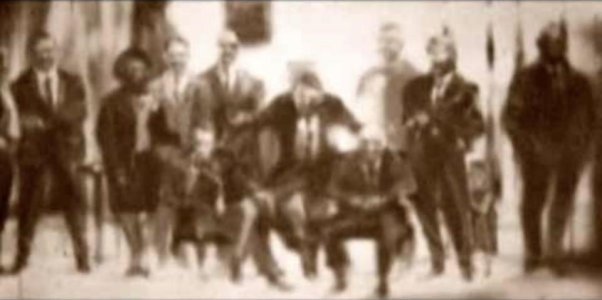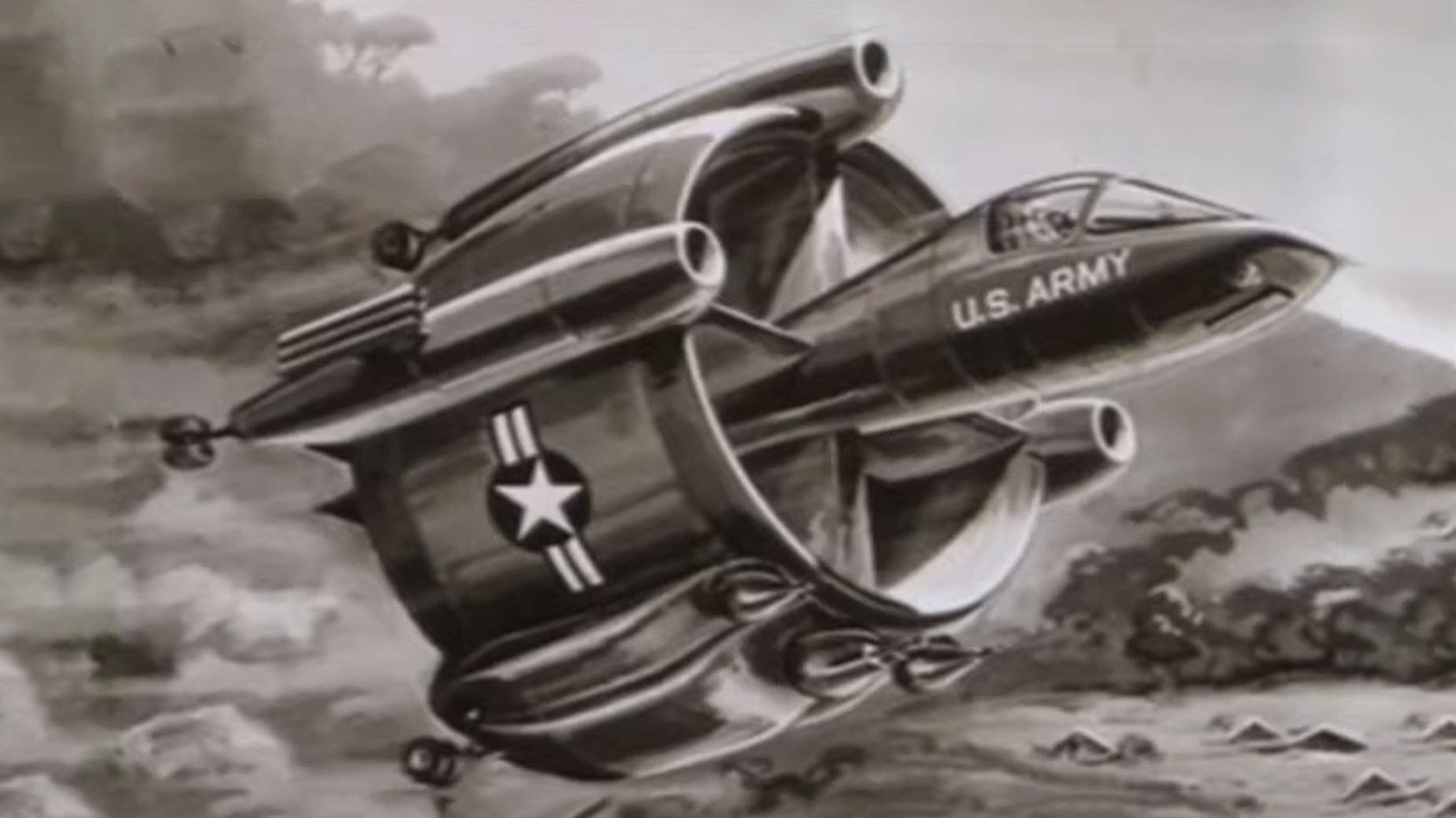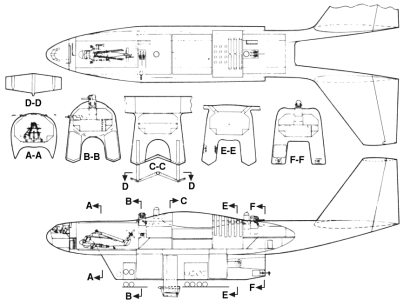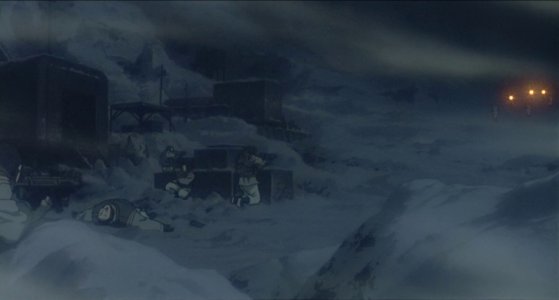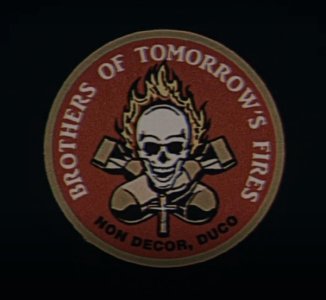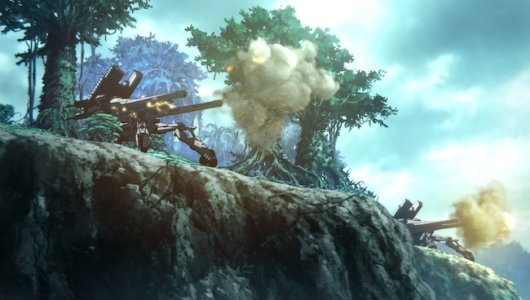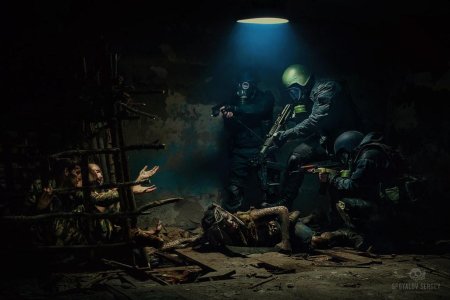Muckers: the Wrecker

Viagra Boys said:
But if it was a million years ago
And we were still living in caves
You would not be welcomed by the other apes
'Coz you evolved a bit too late
You ain't no ape
You're a troglodyte
- “Troglodyte”,
Datalinks
Of the half a million souls that were loaded onto the UNS
Unity, many perished during Planetfall. But even after that mass bloodletting, most successfully evacuated to Chiron, some while unconscious. Besides the main Landing Pods that delivered major factions, sub-factions, and other faction-like polities to safety, countless Cryo Pods and small craft housing cryocells made it to solid Planet. In the most modern of modules, entire cryobays detached themselves for atmospheric entry. After landing, passengers aboard slumbered indefinitely in atomic battery-powered frozen chambers until recovered by humans or eaten by wildlife.
Smacers and ambitious would-be new factions- sometimes these were synonymous- prized cryobays as a means to bolster their populations. For a self-exiled scavenger or revolutionary splitter with more gunmen than mechanics, these “people mills” were gold mines for scarce specialists with irreplaceable skills. But as with all resources on Planet, the odds were good, but the goods were odd. Newly-thawed colonists were susceptible to all kinds of ailments, from immunity-debt creeping Earth colds and flus, to genetic deterioration from extreme long-term hibernation. Most unpredictable were the maladies of the mind. The drastic shock of awakening to a shattered mission proved extremely traumatic, provoking disassociation, withdrawal, SASA in those who could not cope.
In some cases, pod-thawed turned aggressive, resisting their self-proclaimed rescuers with hastily-seized fireaxes and ancient emergency shredders. Worse still were those whose recalcitrance hardened decurns, cycles, even mission years after awakening. More than one plot by disgruntled ‘pod people’ led to full-blown drone riots, responded to with stunjack cannons and nerve staples. Curiously, a late first mission century study by the Schreiber Project’s Psychomechanics Division found that low-aggression smacers were more able to integrate the pod-thawed than factions were. A prevailing hypothesis suggested frontier societies with fewer ideological hang-ups and more environmental dangers facilitated cooperation, assimilation.
 A “less than mint” encampment built around a wrecked
A “less than mint” encampment built around a wrecked Unity
Cargo Dropship somewhere in the Caeneus Stonelands
There was more than one way to fall to Planet. As the decades-long construction of the
Unity crawled on, module designs prioritizing safety had made their way to the rubber-stamp of the Mission Industry Standards Board. What was a boon to select corporate contractors and national contributors unintentionally saved the lives of hundreds, perhaps low thousands during Planetfall. These latter-gen sections were equipped with heat shields and parachutes on the outside, secure restraints and supply caches on the inside. Even as the great ship broke apart, not every fragment was helpless. Passengers crammed into these separating modules and the bombed-out husks of shuttles, riding into Chiron’s atmosphere like shooting stars.
Those sealed in intact
Unity wreckage found themselves envying the dead of the command bridge, the hangar bays, old areas of the ship. Or, unbeknownst to them, those who had evacuated safely via Landing Pod. Barely surviving tumultuous crash landings, scrambling to plant mini-hydroponic farms in water closets as rations dwindled, powered only by solar strips on module exteriors, they were caught between starvation and suffocation. Some wrecks lacked enough breathing masks, environmental suits, self-defense weapons. Those who did broke their hermetic seals and went forth into Chiron, founding bases in the wild or getting rescued by better-provisioned passer-by. But others stayed trapped in security islands for a very long time.
Fearful inhabitants of a fallen chemical store room react to xenofauna sounds and shadows beyond their sealed home
Strangest was the fate of wreck survivors who deigned to step outside. Unable to see their new homeworld because of malfunctioning sensors, they feared the worst and dug in, sometimes for mission decades. Cut off from a presumed hostile environment in tiny makeshift cabins like the earliest moonbase pioneers, their only escape was into VR via
Unity headsets, endlessly running and re-running training scenarios for entertainment.
Deprogrammed members of these “Tupperware parties” later told of how rabble-rousers wrested control of their pitiful communities, claiming they were the sole remnant of humanity. Dozens of ‘Forever Ware Families’ espoused bizarre collective delusions: a Planetwide snowstorm resulting from a global ice age sparked by the exploding ship blanketing the skies with ash, a radioactive mutant-infested death world caused by the mission complement of nuclear devices detonating in atmo. Outside was a landscape more toxic than Earth, or an endless sea in which they would surely drown. The compartment was the only safety that remained; the keeper of the seal was their only savior from certain death.
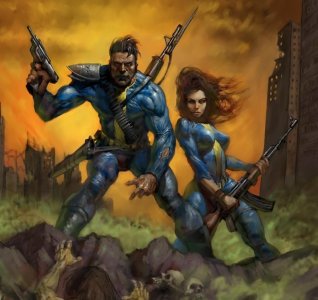 Two erstwhile Aquatic Operations Division - Industrial Safety personnel emerge from the
Two erstwhile Aquatic Operations Division - Industrial Safety personnel emerge from the Unity
moon pool to greet visitors with salvaged small arms and the characteristic wrecker ‘thousand-light-year stare’
As exploring factions encountered inhabitants in the
Unity’s bones, “wrecker” became an epithet for those who not only dwelled among the rubble of the colony ship, but had gone feral from the experience. Early expeditions by the Hunters of Chiron’s Buzzard Lodge salvage crews to crashed sections of Fluid Ops reported snarling, frenzied denizens leaping forth from freshly-cut blast doors. Brandishing clubs fashioned from furniture, spears improvised from metalworking equipment, even bows crafted from office supplies, they assaulted outsiders without a second thought. While some throngs were easily beaten back by scout teams toting 7.62mm UN standard hand weapons, sheer numbers of crazed survivors overwhelmed unluckier expeditions.
Mollification attempts followed. Believers of the Lord’s Conclave sent psych priests with dispersal gas soaked in incense and sonic stunners that used gospel singing as a carrier wave. The Human Tribe simply dispatched Defender shock troops with penetrator rifles to these suspected “Holnist enclaves.” Neither ministering nor surrender demands fazed the wreckers. Foaming with inarticulate fury, they swarmed out of newly-unsealed ship segments like mindworms. (Wormmadness was originally suspected. Nests were indeed present at a few crash sites, but not all. In some instances, ravenous indigenes even joined in the fray.) Those apprehended via less-than-lethal weaponry howled incoherently until heavy sedation finally shushed them. Once taken far away from the wrecks some regained a measure of lucidity, but others simply spat accusations of ecocide at their captors, repeating “You should not have come here.
We should not have come here.”
 Hostile survivors of voidtight Cargo Bay ζ-R, operating under the shared hallucination of still being in orbit, contend with perceived alien intruders
Hostile survivors of voidtight Cargo Bay ζ-R, operating under the shared hallucination of still being in orbit, contend with perceived alien intruders
Wreckers proved to be a reoccurring impediment to proper exploration and exploitation of the
Unity’s remains. These atavistic primitives, nicknamed trogs after Tamineh Pahlavi dismissed them as “devolved refuse,” were seen as irredeemably insane, or simply too much trouble to subdue and recondition. And too dangerous to efforts towards reclaiming mission patrimony. Shoot on sight protocols were approved, bounties to ‘renovate’ wreck sites posted. Some smacers eagerly snapped at the prospect of scoring energy from lazy baser, but after finding trogs could be as fearsome as
Harakternik, frontiersmen interest gradually declined. The dirty work of wreck-clearing became that of mercenary contractors, counter-mindworm exterminators equipped with anti-personnel ammunition, and unfortunate scout patrols.
Contrary to widespread perception, wreckers were not dumb brutes simply in the torn rags of mission uniforms. While early encounters featured human wave attacks, over time wreck site defenses somehow grew in sophistication despite their ignorance of one another, let alone of other societies. C.R.A.S.H. androids stuffed with mining explosives welcomed unsuspecting searchers of untouched stores. Fanatical wreckers ambushed from vents and lockers. Coils of mindworms creeped forth from under instrument panels. Incidents exist of wreckers in jury-rigged
Unity Walkers smashing through steel walls, bringing down photonic cannon fire upon hapless supply hunters like a nova in the dark.
Cagouled wreckers in environment ponchos, perhaps traded from ruiners, convene around a destroyed long-range Unity
Surveyor Shuttle on a full Pholus night
The mindworm metaphor was especially apropos when it comes to wrecker mobs. With little warning, multiple crash sites would spontaneously unseal, unleashing a biomass of madmen in cobbled-together Walkers, Rovers, Bikes, Gunships, and even Choppers into the frontier. Navigating by unknown means, rampaging through fungus tracts with impossible ease, these mobs made a beeline for the nearest factional territory, steamrolling unfortunate smacer settlements along the way. Like boils that had reached super-maturity, wrecker mobs attacked any base they came across, laying siege if met with perimeter defenses and mercilessly killing when not. While these incursions were usually simple to beat back, they did have the capacity to overwhelm newer, lightly-populated areas, and made a fateful difference for a faction already in a challenging vendetta.
Factions finally undertook serious study of the wrecker phenomenon after mission years of dismissing them as simply driven mad by traumatic awakenings, culture shock, or gene entropy. Their capacity to form mobs, akin to ruiner hordes, puzzled basers. How could self-isolating crash survivors replenish their numbers? The rump Togra Labs office based in the Chiron Cartel won a contract from Sathieu Metrion to examine the strategic difficulties of securing prized data collections from derelicts, beating a competing bid from the traitorous Schreiber Project. Half a dozen annihilated field teams later, Togra sociologists reported to their Legacy Initiative paymasters that they discovered wreckers, like smacers and ruiners, took in defectors from factions and harvested Cryo Pods. Like the latter, they had a tendency to abduct citizens to refill their ranks. Most concerning, field scientists witnessed newly-defenestrated wrecker throngs and ruiner packs meeting peacefully, communicating on some wavelength unintelligible to observers.
Crash-landed in the southern wastes, a throng of wreckers finds unexpected rescue from the Far Strider ruiner pack, ex-Human Tribe anarcho-primitivists
Commissioner Pravin Lal said:
Characteristic symptoms? They included violent perspiration, facial tics, occasional spasms of the long muscles in the thighs and calves, and extremely marked pupillary dilation. [...] Typically, about one to three hours after the onset of the sweating and pupillary dilation, a sensation of floating ensued, and one saw the victims staring at their hands and feet unable to believe they any longer belonged to them. This stage was rapidly succeeded by one of hysterical terror, with visual and auditory hallucinations, and in the great majority of cases total loss of self-control. Outbursts of wild rage, often leading to random wrecking of the immediate surroundings and particularly to arson, and later to assault on anybody and anything that moved. [...]
The content of the hallucinations? Remarkably uniform. Voices came first, especially those of parents, senior relatives, and-in the case of ex-soldiers-officers and NCO’s. Since the majority of these were dead the conviction that ghosts were walking followed logically. Many of those killed were mistaken for evil spirits. Because personal appearance is radically changed by the condition (e.g., the huge staring eyes, the awkward walk due to muscular cramps) close relatives often did not recognize one another and ran screaming even from a wife or husband. After-effects? Melancholia, acute hypnophobia- that’s fear of going to sleep because of the high incidence of nightmares-anxiety, unaccountable fits of violence. - Report from Steel Mountain
Faction societies labored to understand wrecker motives. When physical causes were not forthcoming, they turned to amateur psychoanalysis. For instance, Oscar van de Graaf blamed weak constitutions- the howling silence of the xenofields and the harsh conditions of the frontier must’ve induced some sort of prairie fever in those unready to become settlers. Aleigha Cohen theorized that wild living caused long-term passive exposure to nearby mindworms, with unconscious consequences. Roshan Cobb simplified his co-leader’s idea to “bad dreams while camping.”
Drawing on his time on submarine deployments for the French Union and for the New State, Raoul André St. Germaine suggested that wreckers were sufferers of Solipsism syndrome. Like the unfortunate crews of Bonadventure-class deep dive subs underneath the Oceanian archipelago, they had forgotten the universe beyond their metal boxes, resigning outsiders to soulless automata. He considered them a cautionary tale and extolled his seamen to always keep their households in mind while on long-term missions.
Shoichiro Nagao advanced the notion that wrecker mobs experienced “repressurised recivilizing” caused by going from life in tin cans, to being dumped into the unfamiliar Chironian landscape, to standing on the edge of vast and extravagant bases. Having never encountered such magnificent edifices crafted by human hands since before the mothership had fallen, they were driven to ecstasy and intense jealousy at the soft living they had been denied. In a cruel parody of how visiting certain cities resulted in religious psychosis on Earth, wreckers thus viewed themselves as anti-messiahs, divinely called to destroy these blasphemous abominations. While some have suggested Nagao was wryly condemning excessive urban developments, others have taken this concept seriously, terming this disease New Jerusalem syndrome or Morgan Paris syndrome.
Sheng-Ji Yang read secondhand accounts of smacer camp tales and declared that wreckers were the inverse of ruiners. The latter were men who had been to “the edge of Planet,” forced to the fringe of humanity and succumbed to instinctual savagery after staring at the abyss. The former were those who had been closed off for so long that upon exposure to the open range, experienced a sudden desire to strive towards perfection. After hearing of phantom dangers by charismatic con men for so long, they could not cope with seeing the true objects projecting shadows before the fire. Elated at surviving in a not-entirely-lethal environment they were driven to master all that laid before them. Which included the factions. Yang believed this will to power could make them unvanquishable under the guidance of a steady helmsman. He ordered the Labyrinth to capture wreckers, dosing them with high levels of the prototype sedative Pylene Hydrochlorate he had bought from Dreamer crawlers. Unlike the silent ruiners, they were garrulous, but their rhetoric was all gibberish. Captive wrecker mob leaders betrayed little insight when brought into a punishment sphere, merely insisting that they had taught their followers to “resist intrusion” and “undo sin.” The Rectify Wildmen into Hive Citizens Edict was shut down within a mission year, and all potentials recycled.
 Yogyakarta-born mycologist Ratna Pertiwi could not find a definite link between xenofungus and muckers, but made the comparisons that coined their name
Yogyakarta-born mycologist Ratna Pertiwi could not find a definite link between xenofungus and muckers, but made the comparisons that coined their name
The connection between wreckers and ruiners finally came to fruition under a joint study on “stochastic derangement” held by the Phoenix Nation and the Watchers of Chiron. Instead of subjecting marauders to chemical treatments, they were placed in elaborate social simulations set up by Sardul Singh’s situationists, supervised by Trung Thi Hoang’s elite psychtechs. Elaborate sound stages replicated prisoners’ natural habitats, from the claustrophobic confines of a sealed compartment, to the esoteric passageways of monolith catacombs. The results were astounding. When left to themselves, both groups entered into a state of torpor. Ruiners meditated into their infamous dervish-like trances, acknowledging one another only in call and response chants. Wreckers dutifully behaved like sane colonists in their terrariums, but at increasingly languid paces until they gradually fell to the floor into a semi-comatose state. In this lethargy, their bodies vibrated at the same frequency as the sporeline of fungal patches. Stimuli like interloper movement or recordings of Former sounds could rouse them into a state of bloodlust, ready to wage war.
Xenomycologist Ratna Pertiwi, once from the Indonesian Soviet Republic, then at the Sensory Refactoring Group of the Watchers of Chiron, labored in vain to prove that patients of stochastic derangement had been exposed to native spores. But many wreckers lived in conditions that prevented xenofungal contamination, and control subjects exposed to contaminants were usually more terrified than aggressive. Her observations repeatedly likened wrecker and ruiner behavior to the
gelap mata (darkened eyed) who committed wanton violence for no discernible reason, or mad crowds gone
amuk, back in Southeast Asia. This comparison to the earthbound cultural distress concept of Amok captured the popular imagination of the datalinks, and was gradually corrupted into the title “mucker.”
Casting
Ratna Pertiwi is portrayed by Christine Hakim on
The Last of Us
Design Notes
Two other Civ-derived future 4X games were released in Alpha Centauri’s shadow in 1999: Activision’s Civilization: Call to Power and a Sid Meier-less MicroProse’s Civilization II: Test of Time. Neither, of course, garnered the acclaim as SMAC did, but they did all have Civ scenarios that went into the far future, unlocking the ability to build in orbit or even on other planets, a feature that Alpha Centauri sadly lacks. Test of Time, basically just a Civ 2 remaster, also includes a Sci-Fi Campaign named and set in the system of Lalande 21185, which had some
great planetology world-building in the manual that is almost completely absent from the actual game. (The actual campaign is also almost disappointingly soft sci-fi and underwritten- while its
describe.txt file has some decent terrain descriptions, also see
the reference card, but many of the techs, wonders, and units are typical space opera fare. Quite space fantasy, actually- you can build giant bioengineered scorpions, bumblebees, and griffons, and something called an “intelliraptor.”) Anyway, I read the barbarian difficulty settings in the ToT
manual and decided to adapt it for RtD:
So I actually had the idea for wreckers before I came up with ruiners. Both are types of muckers. As in the last segment, they’re meant to be the Civ enemy barbarian units to the smacers’ Civ city-states. A relentless, unreasonable human bogeyman that nips at player expansion.
Contrary to my original interpretation of the above description, in Test of Time you don’t actually see crazed crewmen and native aliens fighting side-by-side. When you explore a wreckage site (the campaign’s equivalent to Supply Pods, or “goody huts” in the Civ series in general) an Ophion, a Jury Rigger, or some other unit (probably equivalent to various ones that can appear as
barbarians in the base game) might spawn and attack you. Hilariously- and suspiciously- enough, the Ophion are alien worms!- though they're more like the giant
Dune variety than SMAC’s System Shock 2 annelid look-alikes (what a year for alien worms in games 1999 was). My reference to wrecker-cobbled
Unity walker was a nod towards the latter, a barbarian unit that cannot be built by players.
describe.txt said:
@@Ophion
In general, the forms of life native to Funestis are not hostile, but the higher forms are almost invariably so. As yet, there is no scientifically accepted reason for this, but several experts have speculated that the Funestian ecosystem has a built-in defense mechanism. When stressed by an exploitative species, especially an alien one (such as ourselves), the planetary ecology "fights back" with the uncaring brutality characteristic of nature everywhere. Theorists are divided on whether this is a natural trait or was engineered into each selected species by the original inhabitants of this world. Regardless, the Ophion worm is a prime example of this effect. The vicious, giant, burrowing creature remains underground until it chooses to attack--or someone unwittingly tries to move onto the land it occupies. It then erupts from the ground, strikes, and retreats. On occasion, an Ophion has been captured and trained, but systematic domestication has proven to be impossible.
@@Jury Rigger
Though robotic and mechanized warfare have been carried on for some time, it is only recently that the ecosphere defenders, raiders, and other barbarian groups have begun to use this technology. The Jury Rigger, though often cobbled together from stolen and salvaged parts, is nonetheless an extremely potent and dangerous war machine. The pilots chosen for these devices are frequently careless of life--even their own--and it shows in their tactics. The resultant brutality is often difficult for civilized forces to match and defeat. Jury Riggers have no independent ability for space travel, but they have been reported off-planet.
Muckers are not the same as the Cult of Planet, namely they are less socially developed or functional to be a sub-faction, much less an actual faction.
Mechanics
I always thought
Unity should’ve brought more than the canonical 10,000 passengers to Alpha Centauri, even if RtD’s numbers seem a bit much to me. But the more the merrier, and I think one way to explain how so many factions appear is that there were a lot of cryotubes that safely ejected to Planet, to be recovered later. So in game you could have events where you find Colony Pods in Supply Pods. But to balance it, perhaps these new bases you found could have drone problems, to reflect the difficulties integrating late-awoken arrivals. Sort of like the ‘freezer-burned’ pod-thawed people in this segment.
Ruiners would basically be enemy human units that spawn on or near newly-sighted monoliths, making them less than a safe thing until after you explore them.
Wreckers would serve the same for
Unity wreckage landmarks, more of which would appear besides the one.
Both ruiner hordes and wrecker mobs would be human unit equivalents to mindworm boils that spawn periodically, especially as you cause eco-damage.
Notes
The Great Joining from the previous segment (the smacer society composed of former citizens from the Hive, Believers, and the University) takes its name from Lalande 21185’s version of Fundamentalism, see the describe.txt above.
Forever Ware, a paranormal parody of Tupperware, is from
the first episode of
Eerie, Indiana.
Wrecker delusions inspired by
Snowpiercer,
Fallout,
Silo, and
Pandorum.
Lal’s description of mucker symptoms is a passage about ergot poisoning from
The Sheep Look Up by John Brunner.
Pylene-50 is from
Blake’s 7 and Paxilon Hydrochlorate is from
Serenity, and they’re pretty much intended for the same thing.
Yang’s suggestion that ruiners are men who have seen the edge of planet is adapted from the original description of Reavers from
Firefly as men who have seen the edge of the star system / ‘verse, a somewhat Nietzschean concept that
Serenity dispenses with.
The concept of sporelines comes from a cut quote from
page 28 of the Prima’s Official Strategy Guide for SMAC by Chris McCubbin and David Ladyman. Academician Sorov appears to be a pre-Saratov early version of Zakharov(!)
Image Credits
Header screaming mutant astronaut is “
Red Madness” by TD-Vice
Spaceship settlement is “
The spaceship crash landed in an alien planet” by Jina Park
Three frightened crew is the
box cover art of
Alien Virus
Two armed survivors is “Vault Dwellers” by
Justin Sweet for the original
Fallout
Spaceship crew with guns is “
We will find you.” by u/Dakophyntix from
Alien: Isolation
Crashed ship in ruins surrounded by hooded figures is an illustration by Bob Layzell for
pages 38-39 of
Spacewreck: Ghostships and Derelicts of Space by Stewart Cowley, a
Terran Trade Authority Handbook
Spaceship survivors in snow surrounded by encroaching spearmen is Dean Ellis’
original canvas for the cover of
Icerigger by Alan Dean Foster
Ratna Pertiwi is from episode 2 of
The Last of Us
Further Reading
Amok syndrome, Wikipedia
Solipsism syndrome, Wikipedia
Jerusalem syndrome, Wikipedia
Paris syndrome, Wikipedia
Is the Silence of the Great Plains to Blame for ‘Prairie Madness’?, Atlas Obscura



